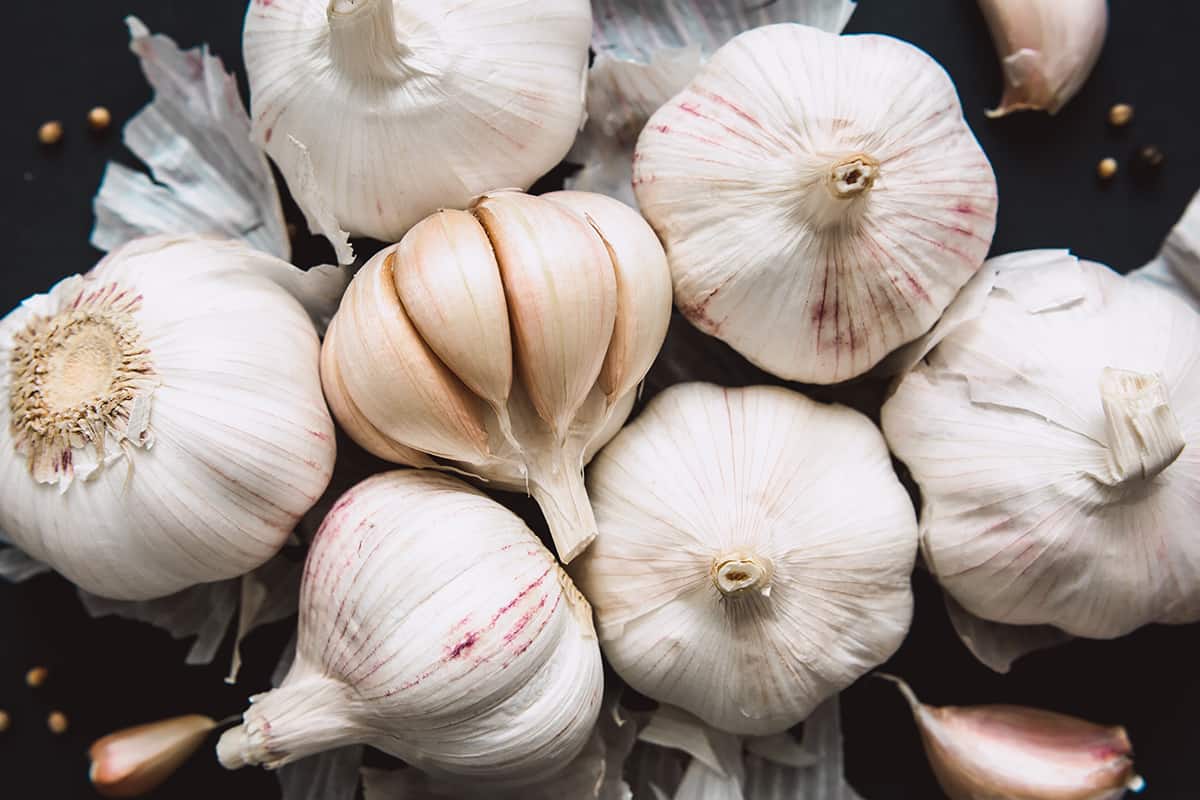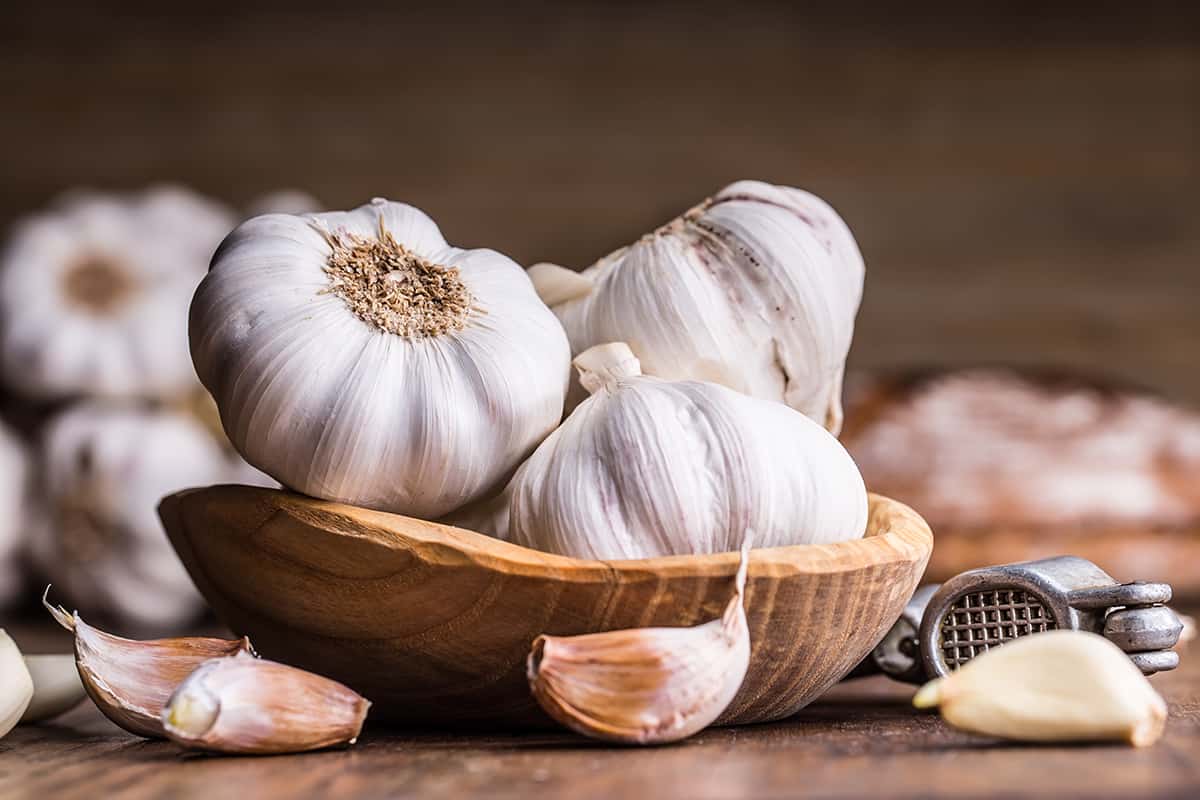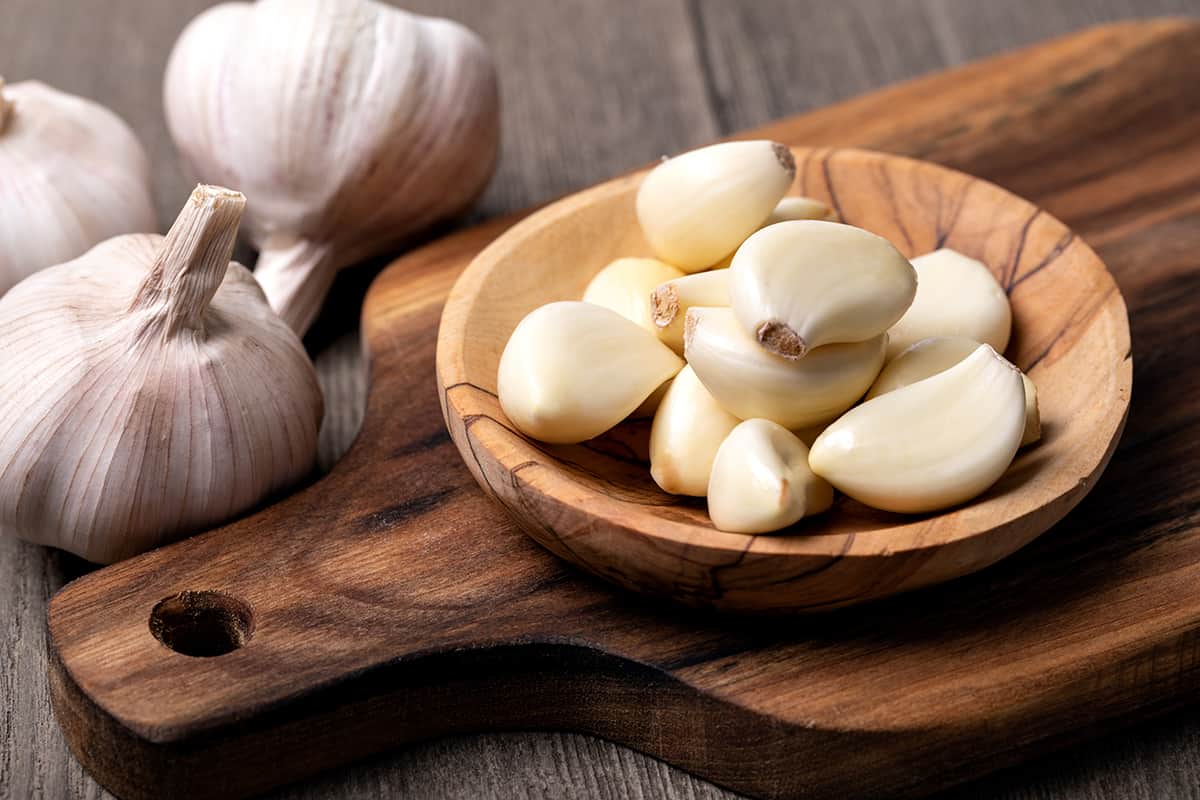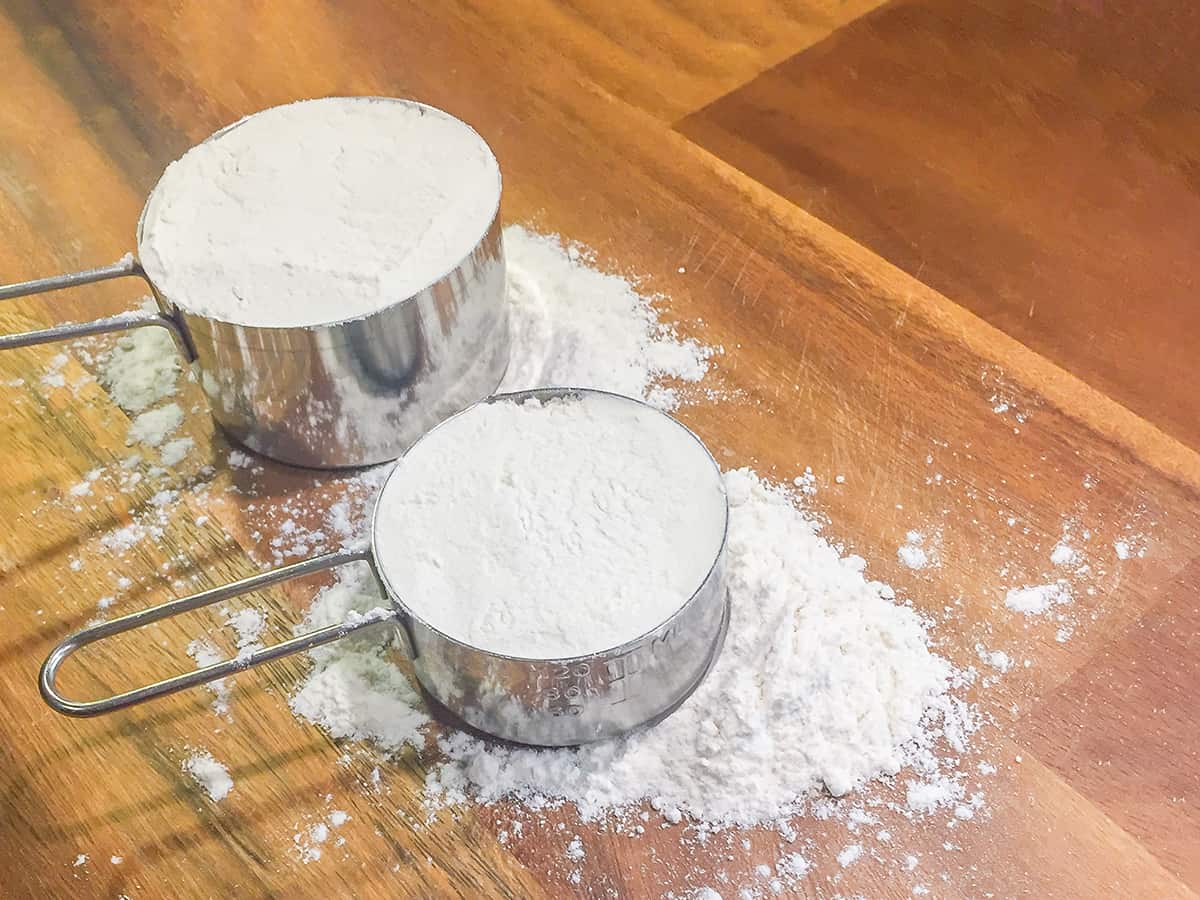Garlic is one of those ingredients that people hate with a vengeance or love with all their hearts. There is no in-between. If you’re like me, you’re a fan of the onion variety and want to know how big a clove of garlic is.
A single clove of garlic will usually measure 1 to 1.25 inches in length and yield one teaspoon of minced garlic. However, its exact measurements and minced volume will depend on what size garlic it came from.
In this guide, I’ll go into more detail about the size of garlic cloves and the size classifications for garlic. I’ll also speak about the health benefits and dangers of garlic, so you will have more of a reason to hate or love this vegetable.
Garlic Size Classifications

As an agricultural product, garlic bulbs grow to become different sizes. The largest bulb of garlic in recorded history belonged to a Californian man by the name of Robert Kirkpatrick. The massive garlic bulb grew to weigh 2 pounds 10 ounces!
However, garlic doesn’t usually grow to such astronomical sizes. Garlic usually comes in three different sizes—culinary, large, and jumbo. Let’s take a look at each size class.
Culinary Size
Culinary garlic refers to bulbs of garlic that measures less than 2 inches in diameter at their widest points. Most store-bought garlic bulbs will fall into this size class.
Large Size
A large-size garlic bulb measures between 2 and 2.25 inches in diameter. If you purchase a mesh sack of garlic, you might end up with a couple of large garlic in the bunch.
Jumbo Size
Any bulb of garlic that measures 2.25 inches in diameter and wider falls into the jumbo-size category. You might have to visit a specialty store to pick up jumbo garlic, or you can grow your own.
How Big Is a Clove of Garlic?
On average, a garlic clove will measure between 1 and 1.25 inches in length. Large garlic may have cloves that are closer to 1.4 inches long, while jumbo garlic may be around 2 inches long.
So, how much minced garlic can you get from a single clove of garlic?
A typical clove will usually yield around one teaspoon of minced garlic. The larger the bulb, the larger the clove, and the more minced garlic you’ll end up with.
It’s important to note that a large garlic bulb doesn’t necessarily translate to sweeter or tastier; rather, its cloves may be larger in size. You first need to understand that there are at least 11 horticultural groups of garlic, with each group offering different flavor profiles, colors, and sizes.
Most Commonly Used Types of Garlic

Here, I’ll talk about four garlic varieties that you’ll most likely come across when shopping at a Farmer’s Market or grocery store.
Chesnok Red Garlic
Chesnok red garlic is mostly used in baked recipes. As it cooks, it develops a pleasantly sweet flavor without the heat that is commonly associated with garlic. It has a noticeably pink-red exterior and around ten fat cloves. Measuring 1.75 inches in diameter on average, Chesnok Red Garlic usually falls into the culinary size class.
Elephant Garlic
From its name, you can tell that Elephant Garlic isn’t your run-of-the-mill garlic variety. It’s a humungous bulb that can grow up to 4 inches in diameter on average. While it’s larger than the other varieties, Elephant Garlic isn’t as spicy or pungent, making it an excellent choice as a raw addition to salads or as a garnish. A single bulb will usually only have six cloves.
German Porcelain Garlic
One of the most prominent signs that you have a bulb of German Porcelain Garlic on your hands is the purple-hued wrapper, as well as the streaks of purple along the surface of the individual cloves. This type of garlic will usually measure 3 inches wide and come with 4 to 5 humungous, easy-to-peel cloves. It packs a sharp flavor, and it has a pleasant earthy aroma that is typical in strong, pungent garlic varieties.
Vietnamese Red Garlic
This garlic variety falls into the culinary to large-size groups. It typically measures 1.75 inches in diameter and comes with between 5 and 18 cloves. When roasted, the cloves disintegrate into a creamy, super-sweet mush. The flavor and aroma aren’t overpowering, making it a great “entry-level” garlic variety for those who aren’t fans of strong garlic types.
Hardneck vs. Softneck Garlic

There’s another way to look at garlic varieties—by the “neck.” The neck in garlic terms refers to the upward-growing portion that comes shooting out of the bulb. The stalks of hardneck garlic varieties are rigid at maturity, whereas softneck garlic grows leaves instead of a tall stalk.
So, when it comes to hardneck and softneck garlic, which one is better? It’s a simple matter of personal preference. Some people claim that hardneck garlic is more flavorful than softneck, while softneck is sweeter and less pungent. As far as the clove count goes, hardneck garlic varieties grow fewer bulbs than their softneck counterparts.
Here’s a brief table describing different garlic varieties based on their “neck.”
| Hardneck Garlic | Softneck Garlic |
| Chesnok Red Garlic | Applegate |
| German Porcelain Garlic | California Early |
| Persian Star | California Late |
| Purple Stripe | Red Toch |
| Rocambole | Galiano |
| Creole | Italian Purple |
| Asiatic | Lorz Italian |
| Turban | Italian Late |
| Elephant Garlic | Elephant Garlic |
How to Store Garlic Cloves
Have you ever found a weird-looking growth sprouting out of the top of old garlic before? That growth is either the stalk of hardnecks or leaves of softnecks. If your garlic has already sprouted, don’t toss it out since it is still edible. Just cut the sprouts off and possibly use them as a garnish for your next recipe.
But if you want to prevent your garlic from sprouting, here’s what you should do:
Intact Garlic—If your garlic is completely intact (you haven’t cracked its exterior wrapper yet), you don’t’ have to place it in the fridge. Just put it in a dark part of your kitchen that is around 60°F. Also, keep it uncovered to allow it to vent its gases and moisture.
Unpeeled Cloves—After you’ve broken the wrapper, your garlic will begin to rot. On average, unpeeled cloves can last for two weeks in the open. Store them in a cool, dry place.
Peeled Cloves—After removing the peel, you need to use the garlic cloves as soon as possible. Keep them in an airtight container inside the fridge to prevent them from perfuming everything else in your refrigerator.



